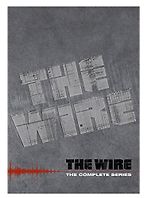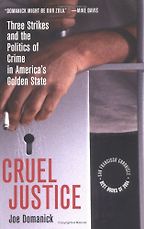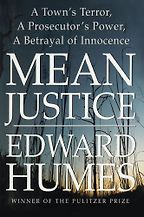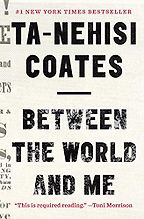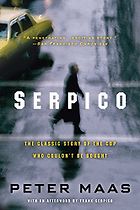In your book, you write the history of LA Policing in the last 25 years through the experience of a series of key players. Why do you choose to focus on individuals?
I believe very strongly in narrative non-fiction, and to do a narrative non-fiction, you need to have people carrying the story. Without illuminating the lives of the characters involved I think readers would lose interest. In a book of this scope, the larger story could get lost unless you’re telling it through a number of people who are true characters throughout.
How did policing in the US develop a culture that needed to be so radically overhauled?
It still needs to be radically overhauled.
The culture of policing in the United States has always been based on violence. In the case of Black Americans it was based on violence as far back as the slave laws in 1850, which essentially said all law enforcement throughout the country, not just in the slave states, were required to arrest and send back to their owners in the South all slaves that had escaped. From that it exponentially got more intense and more comprehensive as a way to keep down African American people and poor people in general, down and in their place. Violence was the routine way they chose to do this. America is a very violent country if you’re poor and if you’re a person of colour. We live in mostly segregated communities. If you’re white and middle class you don’t experience violence.
“The culture of policing in the United States has always been based on violence.”
But New York has really had a dramatic reduction in crime for the past 20 years, every year it’s got down from a high of over 2,000 homicides in one year, that was in 1990. But, again, what’s happened in that situation was the New York City police commissioner before Bill Bratten, a guy named Ray Kelly, introduced so many stop-and-frisks that they became routine. Hanging [criminal] records on poor, black guys, whether they were going to community college, whether they were going to school, or whether they were just hanging out on the corner. This kind of intense policing of poor people in the United States has developed a culture of enforcement by violence, which is exacerbated by the fact that there are over 300 million guns in the United States. The police are increasingly shooting first and asking questions later.
What we saw in Los Angeles over the past 22 years was first the beating of Rodney King, and then the ’92 riots, which were really an explosion of protest against the LAPD and against the city itself.
Can you explain community policing, and whether you think it’s being implemented.
You can ask ten people and they’ll come up with ten different definitions. My understanding, and it’s a pretty educated one, is that real community policing involves the police getting the permission and the support of the community and working with them to police them, so that they don’t feel like the police are an army of occupation. Like the Marines in Fallujah.
Without that permission, without that understanding, you’re going to constantly be in conflict with the police. They will not get any co-operation with crimes like homicides, because no-one will talk to the police. It’s verboten in poor African-American communities to say anything to the police, even if you witnessed the shooting. That’s why so many homicides go unsolved in the United States, simply because nobody will talk to the police in the areas that have the highest homicide rates.
Do you think so-called broken windows policing ever worked?
People get confused between stop-and-frisk and broken windows policing. Broken windows policing is when the police have an option — not with the homicides or felonies but with any kind of minor crime — of citing you or making an arrest. Broken windows is an important concept in policing if it’s done correctly. But it’s rarely done correctly because the more power you give police, the more power they will take.
If you own a store and a guy’s constantly urinating outside on the sidewalk or any number of quality of life crimes that you don’t want to see in your neighbourhood, then broken windows policing can be a useful thing. But in many cases it’s not properly controlled. Many police chiefs when it first came in, said “we’re going to have zero tolerance for quality-of-life policing.” That’s terrible! One example is you’re not supposed to play checkers on the street corner. If you keep on harassing people and arresting them for that particular crime, then you’re just causing a further division between the police and the community.
Get the weekly Five Books newsletter
Bill Bratton reintroduced the concept of massive stopping and frisking in poor neighbourhoods in New York and it caught hold all around the country. He re-introduced it in Los Angeles, where the cops never hesitated to stop-and-frisk anybody that they chose. You give cops the opportunity to do this and then you tell them that your evaluations are going to be based on how many people you arrest and how many people you stop-and-frisk, what’s going to happen? In New York in one period in 2011, African Americans between the ages of 14 and 24 were stopped more times that their entire population, that is, they were stopped 106% of 100% of their population. They stopped over 685,000 people in New York in 2011. That really turned poor people against the Police Department and against Bratton and against the police commissioner who was in charge when this was going on: Ray Kelly. Ray Kelly and Bratton always said “you don’t have this kind of mass stop-and-frisk you might as well move out of the city, it will become so dangerous.” But when a court forced Ray Kelly into reducing the number of stop-and-frisks he reduced it by 30% in one year and crime still went down. Bratton the next year, in 2013, reduced it by almost 80% (79%) and crime also went down that year, as it has for the past twenty years consecutively. So that showed stop-and-frisk was not really the essential tool that was needed when you’re policing.
It seems like if you break through the rhetoric of fear and institute reforms, that what people are afraid of simply doesn’t take place.
Fears often don’t materialise. But crime was so bad in the 80s and early 90s in New York that people really were fearful. I’m from New York, the city was out of order.
Your first choice is a TV series: The Wire. Why did you choose this?
Because it’s the lie that tells the truth. Because we have all these police procedurals here in the United States, I can give you a list of a hundred, they are a staple on network TV. Almost all of them, particularly the ones that have run for a long time, are nothing like our criminal justice system. It’s all detectives solving these crimes through picking up a hair. But our criminal justice system is tough. We have 5% of the world’s population and 25% of all the people incarcerated in the world. Our prisons are an abomination. Most of the people in those prisons are poor people of colour and poor white people. It’s not these middle class white people trying to commit insurance fraud. Nothing I’ve ever seen on television reflects this.
Five Books interviews are expensive to produce. If you're enjoying this interview, please support us by donating a small amount.
The Wire really told the story of the intense crime rise in major cities throughout the 80s and early 90s. And it told it like I tried to tell the story in Blue, it told it through characters, that is African-American kids on street corners trying to sell crack and getting involved in crack wars. 14-year-old kids with guns shooting each other was what it came down to, when their older brothers were in prison or dead. The cop characters were very real. The way that the Baltimore PD was policing was totally ineffective. They were still doing things that they had been doing for half a century.
It wasn’t absolutely the way the criminal justice system really is, but it was extremely well done and therefore hugely entertaining because they were telling stories too.
Your next book is one of your own, Cruel Justice, about the infamous three-strikes law.
Cruel Justice was the book that I had to write. I felt like I had to explain how California — a liberal state in so many ways — could pass the most horrible, punitive three-strikes law in the country. To me, I could tell the story of the whole disastrous War on Drugs and the quadrupling of sentences by talking about how this law was passed. It was passed overwhelmingly, with no dissent, and then the people of California voted for it in a referendum, which was also overwhelming. I had to write that book because people were going to jail for 25 years to life for stealing a ten dollar pair of sunglasses, being in possession of tiny amounts of cocaine, walking into a store, going in to the back, clandestinely picking up a bottle of vodka, taking a swig and putting the cap back on. There were thousands of these kinds of prosecutions for petty thefts, which prosecutors — if you have a prior petty theft — can either prosecute as a misdemeanor or as a felony. To me this was such an extraordinary event that just as a human being I was outraged and as an America citizen, with the constitution that we have, I was also outraged. So that’s why I wrote that book.
Do you have any examples of people who were affected by this law?
I follow one young guy in the book who got addicted to rock cocaine and the only crimes he ever committed were two burglaries of nearby houses where he lived, both of which he pleaded guilty to. He had two felonies on his record, and then he was caught allegedly selling a $5 of cocaine on the corner and that was his third strike. He went to jail for 25 years to life and the ironic thing was he was turned in by his mother. She thought that he would get some help, and he didn’t get that help and his mother became a great crusader to get rid of the three-strikes law and she did it for 15 years until the law was changed.
I was listening to an episode of This American Life in which people from an African-American community were saying they never called the police because they were just so unpredictable in their response.
This is why I was saying about the effect of the occupying force mentality of the police. People don’t want to call, they definitely don’t want to give any information because they fear for their lives, because it’s us against them, that’s how they feel.
For the most part the police don’t live in the community. They live in white, suburban neighbourhoods. The police have no connection with the neighbourhood, they have no feeling for the people. Through 250 years of segregation these communities have developed a different culture that white cops can’t read. They can’t read the intentions of somebody that they’re talking to.
That’s why it’s very important to have a lot more African-American cops. That’s not because good police departments aren’t trying to recruit them, it’s just that so many potential prospects are in jail or prison, or they’ve had prior records — as so many African-American men do — and they don’t like the police, so very few of them — relatively speaking — become police officers. It’s not because that kind of discrimination still exists in a lot of American police departments. It does in some, but not in others. They can’t find the men or the women.
Where are the women?
There are a considerable number of African-American women who are police officers. But there’s not that many women on a percentage basis in any police department. It can go to as many as 15-20%, but I’ve never seen it any higher than that.
Why?
Up until about 1980 there were very few women on police forces in general. The police chief of Los Angeles during the 1970s, a guy named ‘crazy’ Ed Davis he said “I’ll have women on patrol when the Los Angeles Rams — the football team — have women on the defensive line.” That’s the way it was.
Your next book is Mean Justice by Edward Humes.
I remember the book as a witch hunt at a time when there was national hysteria, especially here in California, about rings of pedophiles doing ungodly things to children. Eddie Humes is a great writer, just a terrific journalist. He wrote this book about this born-again-Christian District Attorney out in the hinterlands of California, who just ran amock, indicting and getting convictions on scores and scores of people who were totally innocent and did nothing. You see how much power District Attorneys have in the criminal justice system, mostly used not in an honourable way, but to rack up convictions so they’ll get re-elected.
“Crime was so bad in the 80s and early 90s in New York that people really were fearful.”
Book four is Serpico by Peter Maas.
Serpico is also a terrific book. It’s about a guy named Frank Serpico, in the 70s, who was a patrolman who happened to be a very honest cop. He was assigned to undercover narcotics in New York, busting people for dealing or being in possession of drugs. He was assigned to this unit and he found out that all of the officers were on the take, and not arresting people for any kind of so-called vice. There were detectives who would just take money and let everybody run their own shows. Serpico refused to go along with that and the other cops insisted that he take the money and he wouldn’t. Eventually they virtually set up an ambush and he was shot in the head but was miraculously able to recover. There was an incredibly big scandal after which many high-ranking police executives were forced to retire and effectively the scandal ended that kind of on-the-take corruption in New York City, which had been a tradition for 200 years. Then New York, like other police departments — particularly departments like the LAPD — became involved in a different form of corruption, which is violating the constitutional rights of people and never being held accountable for it: beating people, shooting people. That’s the main corruption right now that big city policing in America faces.
Finally let’s talk about Ta-Nehisi Coates and his book Between the World and Me. You cite Coates in your book a few times.
I think he’s an astounding African-American public intellectual. He writes for the Atlantic. In this book he says many things: some of them related to the police, some of them related to institutional racism in the United States. He constantly refers to his body. He had a very close friend who was in college with him — an average college person, he wasn’t involved in street crime or anything like that — and this guy was killed just 20 feet from his house by a police officer. So when Coates keeps talking about his body I think he’s literally talking about the fact that his body could be dead any time he meets a police officer. I think it’s metaphorically about how he and other African Americans feel endangered in this society.
Coates famously made the case for reparations in 2014. What do you think could be done to stop the odds being so heavily stacked against the African-American community?
I don’t believe necessarily in reparations in terms of giving every black person $50,000, but what I do believe is that we have to have the recognition of how badly wounded African Americans are by the psychic brutality they have gone through and the physical brutality that they’ve gone through. After the Civil Rights Acts of 1964 and 1965 African Americans were theoretically equal, there was no more lawful segregation. During that period Lyndon Johnson was president, there was a lot of good in Lyndon Johnson — except that he got 50,000 guys killed in Vietnam, not to mention millions of Vietnamese — and he recognised in some visceral way the need to promote programmes that would advantage African Americans. But that was killed by the conservatives in this country. So maybe 3/4ths or 2/3rds of African Americans managed to make it into the solid working class or middle class. But then there was a huge number left behind, and they’ve been there for four or five generations in ghettos in New York, Los Angeles, and elsewhere.
Get the weekly Five Books newsletter
We have not begun to address what needs to be addressed in every social sphere to eliminate the kinds of violence that we see in African-American ghettos. We’re not even thinking about it, we’re not even talking about it. Now, in America, black intellectuals and African-American psychologists are understanding that this issue of the police is part of a much larger problem. It’s going to take a couple of generations of African Americans in ghettos being really advantaged, not oppressed any more, before we can start to see the the kind of change that we need.
We first need to have a recognition of what’s been done to African-American people before we start to talk about the programmes that over a generation or two can change the situation. Until then, I’m pessimistic.
This interview was published on August 27th, 2015
Five Books aims to keep its book recommendations and interviews up to date. If you are the interviewee and would like to update your choice of books (or even just what you say about them) please email us at [email protected]


